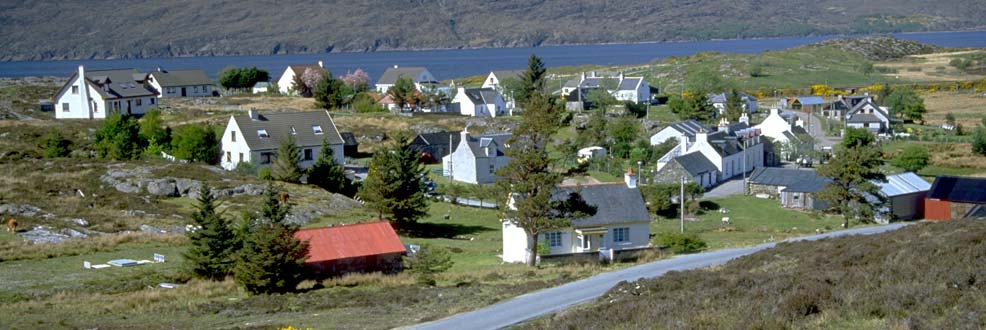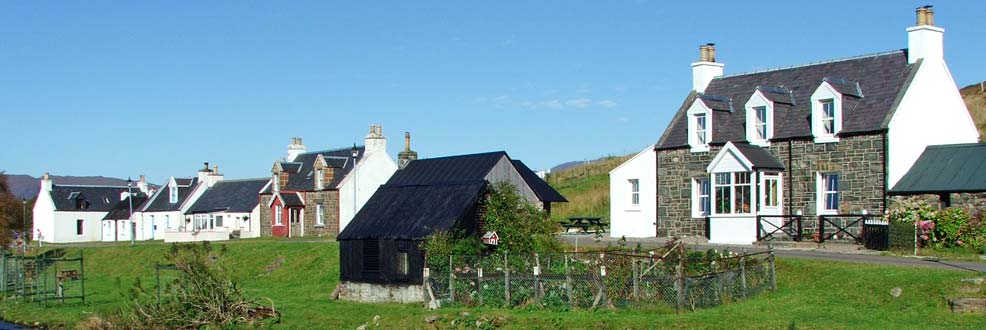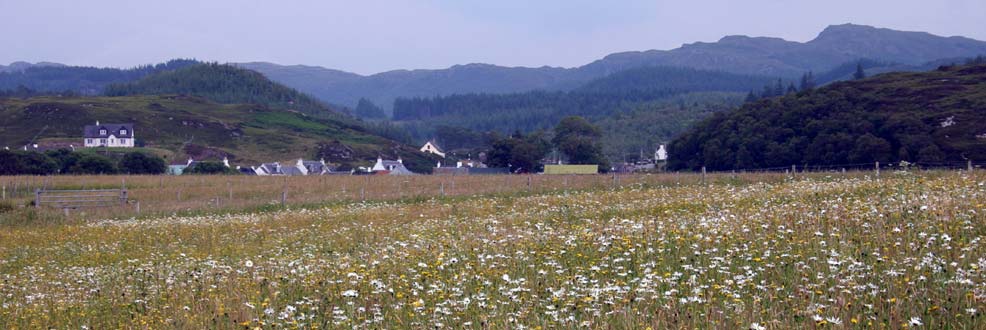The Township system
‘The clan system remained in place in the Highlands until the 17th century. Land was held communally and clan members farmed their land to feed themselves and their families, united by loyalty to their clan.
Following the Jacobite defeat at Culloden in 1746, the clan system broke down and land ownership based on feudal law replaced the old communal rights. Clan chiefs became the new landlords and began to lease large areas of land to tacksmen, their main tenants. They in turn rented land to sub-tenants or tenants-at-will. The rest of the people found themselves landless cottars.
The system of crofting as we know it today began to take shape as a result of the Highland Clearances. A crofting township was made up of several families who worked the same croft land. Land was allocated by a 'run-rig' system which meant that each crofter was given strips of land. These strips were reallocated annually to ensure that the good and the bad land was shared equally. This system did not encourage improvement of the soil and was replaced by a 'lot' system where each crofter was given his own individual lot of land. The lots were kept deliberately small by landlords so that the tenants would be forced to take on additional work for the landlord. Conditions for crofters deteriorated and eventually the Napier Commission was set up to investigate which resulted in the passing of the 1886 Crofter's Act. This act provided security of tenure for crofters and conditions in crofting townships improved. As well as an individual piece of land each crofter in a township was entitled to use of common grazings for their livestock’ - See more at ambaile; highland history and culture.
An explanation of the changes to the traditional runrig communal clan system to the crofting township system with its inbye land within the township and the common grazings beyond. From the Angus MacLeod Archive.
An aerial photograph (with description) of the field lay-out of a Township on the Isle of Eigg.
Crofting around Ullapool – an historical perspective together with a description of the current system, from Ullapool.co.uk.
Explanation of the Balmacara (Lochalsh) Traditional Croft Management Scheme.
‘The State of Crofting in Camuscross’ - a report (August 2009) by Iain MacKinnon and Susan Walker of the Camuscross Grazing Committee. This document gives an historical background to crofting in Sleat before highlighting a number of problems that the community currently faces, with proposed solutions. At the same time it gives an insight into the structure and functioning of that crofting township.
‘The Making of the Gairloch Crofting Landscape’ by J.B.Caird (1981) outlines the development of a ‘modern’ crofting system from its pre-1845 runrig system.











